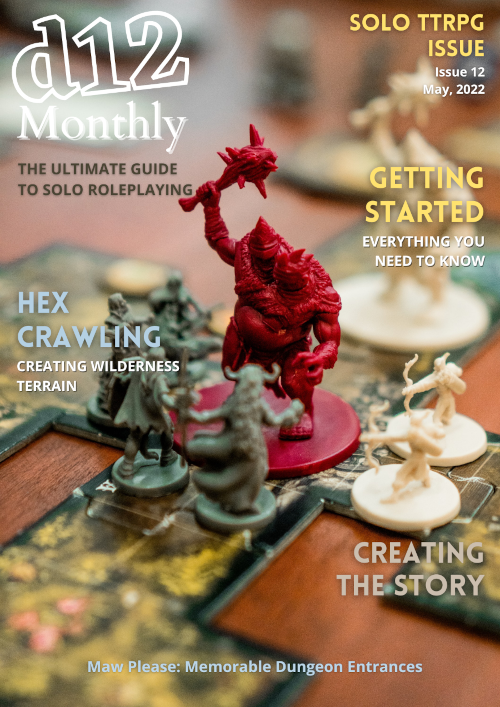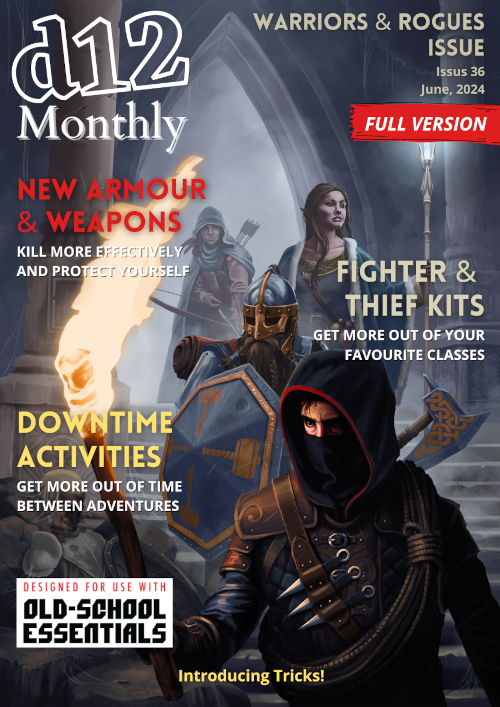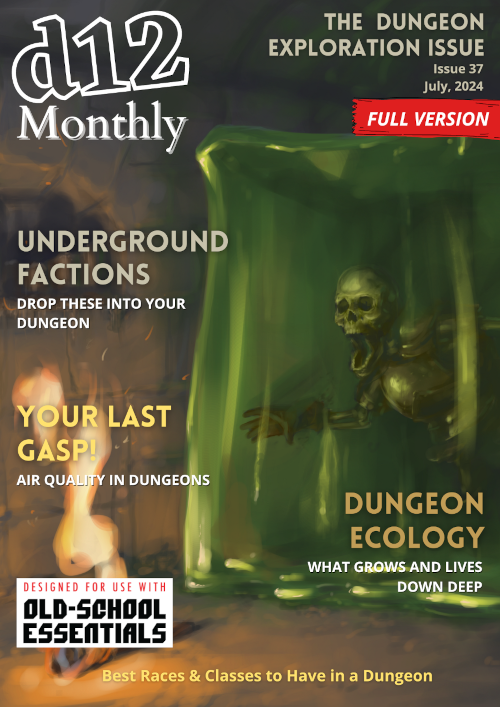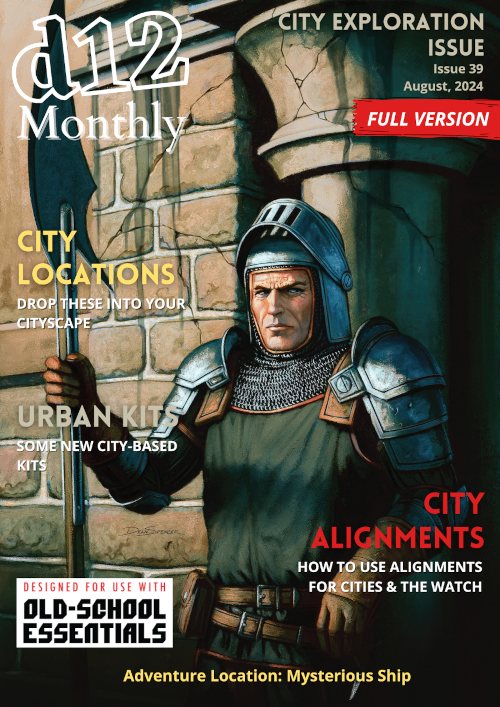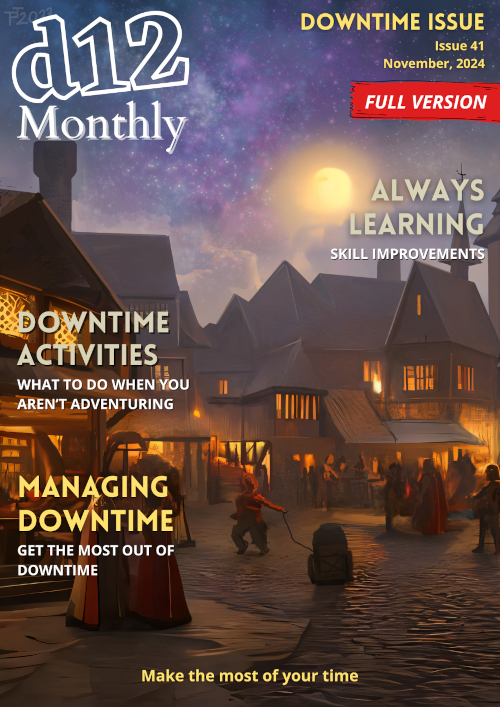
I have written extensively on this blog already about the simple D6 Oracle I use for my solo D&D campaigns. I have written about the D6 Oracle itself, how to use it with word tables, and how to create those word tables, previously.
In this post I want to show you how I combine the workhorse of encounters, the reaction roll, and an Oracle-like Why table.
I even include a good example towards the end of this post.
It’s not the same as the usual Oracle I use, but it is a simple D6 table that will allow you to understand the reason why an NPC is reacting a certain way.
“It doesn’t matter if you get a positive or negative result with the reaction roll – you can use the Why table no matter the result.
When to Use It
While this is a great tool to use, you probably don’t want to use it every time you use a reaction roll. But for the times you need it, it can give you some nice insight.
I usually use this for important NPCs.
I don’t use it much for monsters as I don’t really need to know the reason, and I already have a table to tell me what the monster is up to when you meet them (see Issue 1 of d12 Monthly for this table).
NPCs, on the other hand, generally get asked a lot more questions or favours from the characters.
Need more solo guidance? Check out Issue 12 of d12 Monthly – a FREE issue that is dedicated to helping you run a solo D&D campaign.
The Why Table
If the characters are talking to an NPC, or group of NPCs, you usually roll a reaction roll if the character wants information out of them or wants to get them to help them somehow.
If it’s a minor NPC, like a merchant, and the characters are just asking for a discount, then you can get a result and that’s usually enough information – they are either happy to help, indifferent, or take offence.
But, if the NPC is a prince the characters are asking to assign troops, or an information broker who the characters are trying to get some sensitive information out of, then you may want to know the reason why that NPC does or doesn’t want to help.
The Table
-
- Personal reasons
- Backstory/History
- Resources (Gain/Lose)
- Interpersonal
- Third Party influence
- Hidden secret
After the reaction roll, no matter the outcome, roll 1D6 and consult the Why table above. It doesn’t matter if you get a positive or negative result with the reaction roll – you can use the Why table no matter the result.
Before I go into an example, let’s have a look at each of these results in some more detail.
-
- Personal reasons: The NPC has a good personal reason as to their decision. This relates to them and them only.
- Backstory/History: The NPC has something in their backstory or something they have experienced in the past that has influenced their reaction.
- Resources: The NPC stands to gain or lose something dear to them based on their reaction. For example, they may lose gold, or a contract, or something else precious to them.
- Interpersonal: Their reaction relates to someone else – perhaps the characters themselves, or someone else close to the NPC.
- Third Party influence: There is another person, organisation, or group that is influencing the NPC’s decision and reaction.
- Hidden secret: The NPC has a secret as to why they reacted the way they did.
Solo Roleplaying Essentials:
Example
Xain, a PC mage, is researching an ancient cult and finds a reference to it in a book that has been deemed too dangerous for public consumption by local laws. It is only by order of the head librarian that the tome may be read.
He is trying to convince the head librarian that he needs the information in the tome as a matter of life or death, and that he may be able to stop the cult from regaining power if he can have access to the writing he seeks.
Rolling 2D6 for the reaction roll and adding +1 due to Xain’s CHA, the player rolls a paltry 4: a definite no to getting access to the book.
Xain protests, but the librarian is steadfast in his decision, and threatens to call the town guard if Xain does not remove himself from the premises. Xain is suspicious about the librarian’s motives here as he seems to think it was a little overhanded.
It’s time to turn to the Why table.
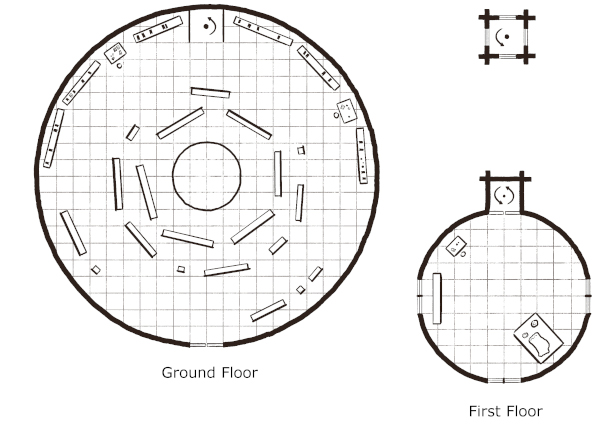
Rolling on the Why table, we get a 5: a third party influence.
The real reason why Xain cannot get access to the tome is due to a third party – either putting pressure on the librarian or perhaps the librarian is a member of this third party.
You can now ask some questions of the regular Oracle: “Does the librarian belong to this third party?” Answer: No.
We already know that this third party has some control over the librarian, so we ask: “Is the librarian being threatened by this third party?” Answer: Yes.
Excellent!
Now we can use a word table to figure out who this ‘third party’ is. You can see how to do this over on another post.
Final Thoughts
As you can see, the Why table can be a great help in spurring on new plots and information as you play. It can lead you down new avenues to be explored and give you insight that your characters can figure out.
Over to You
Can you see yourself using this Why table? Do you even use reaction rolls? Let me know in the comments below.
While You’re Here…
Since 2021 I have been publishing d12 Monthly, a monthly zine, which has a ton of articles for any edition of Dungeons and Dragons.
Printed copies are available in my store. The PDF is available on DriveThruRPG and you can get both, plus support my work, via my Patreon.
I will also be releasing some more products in the near future.
Feel free to reach out to me on Twitter or my contact page any time.

